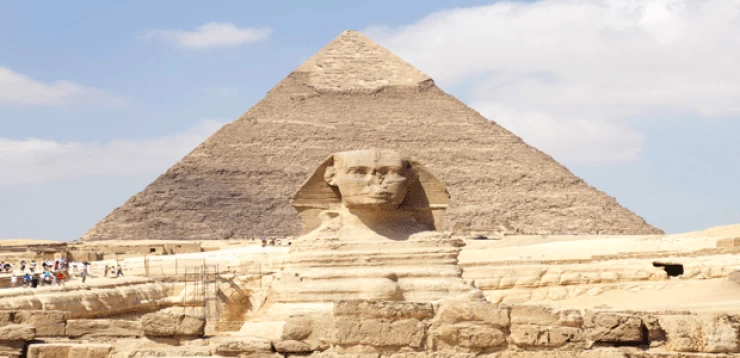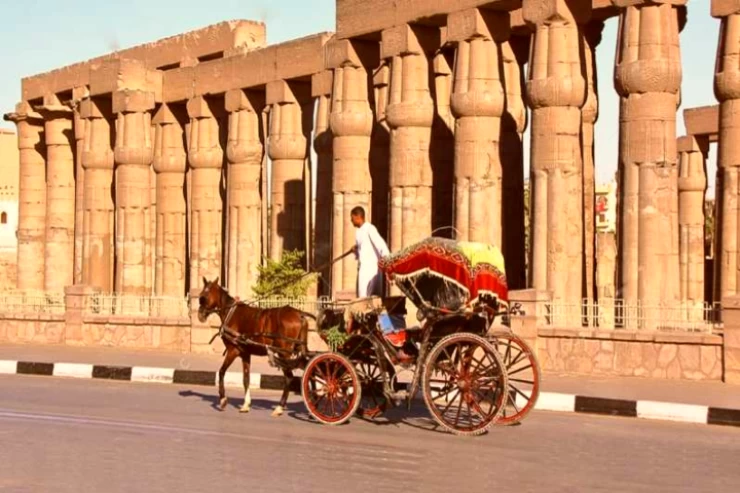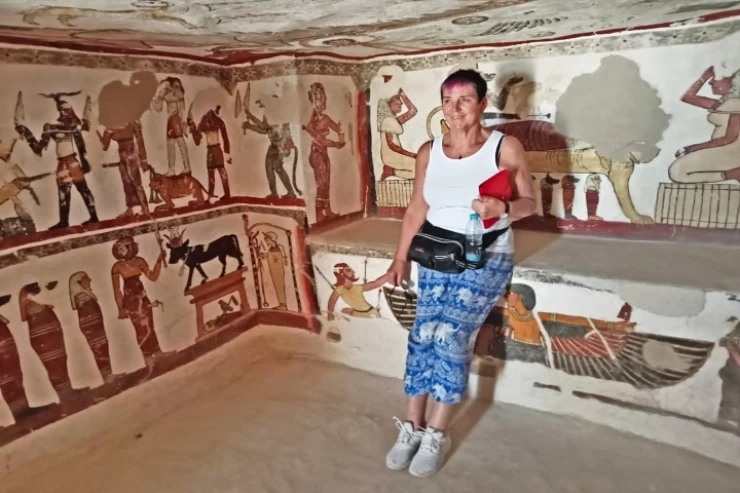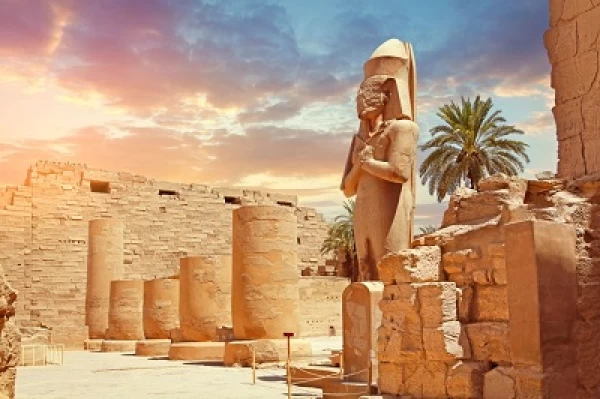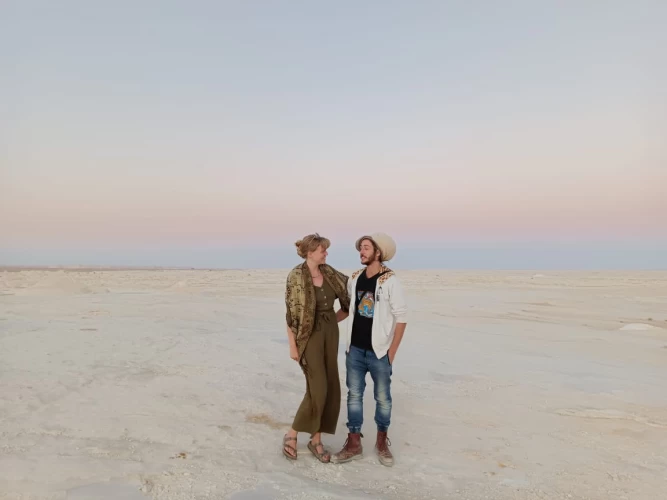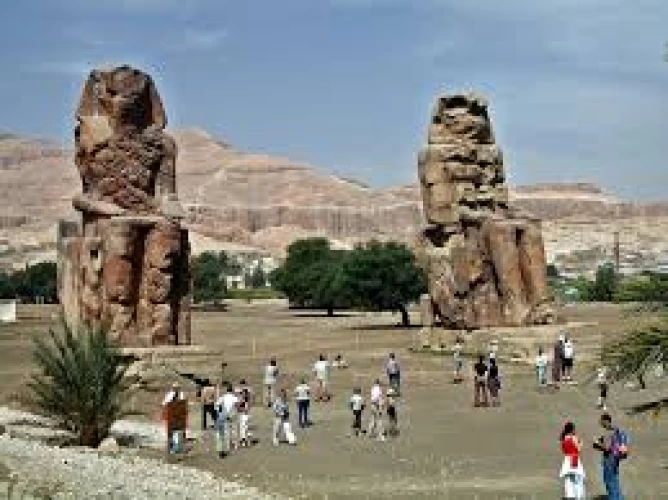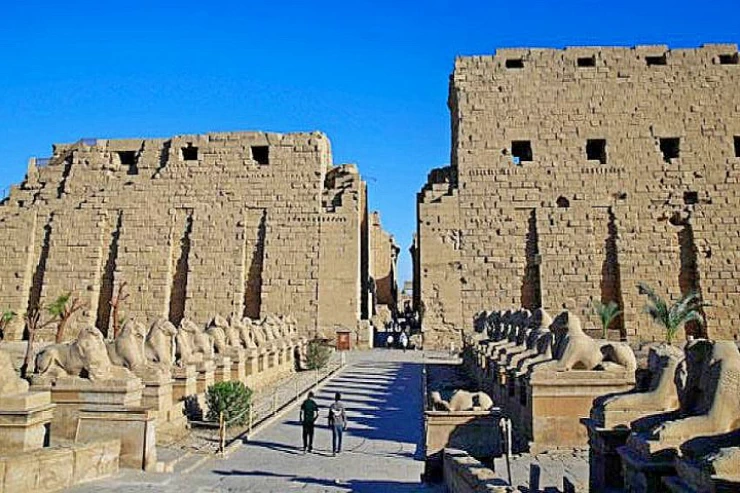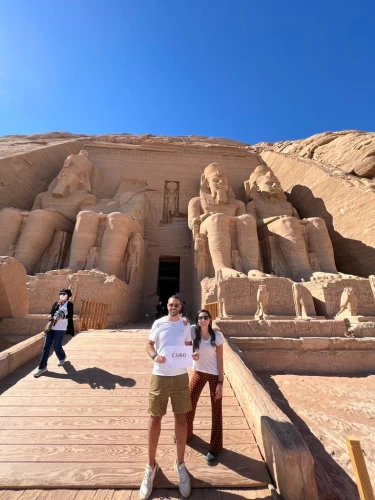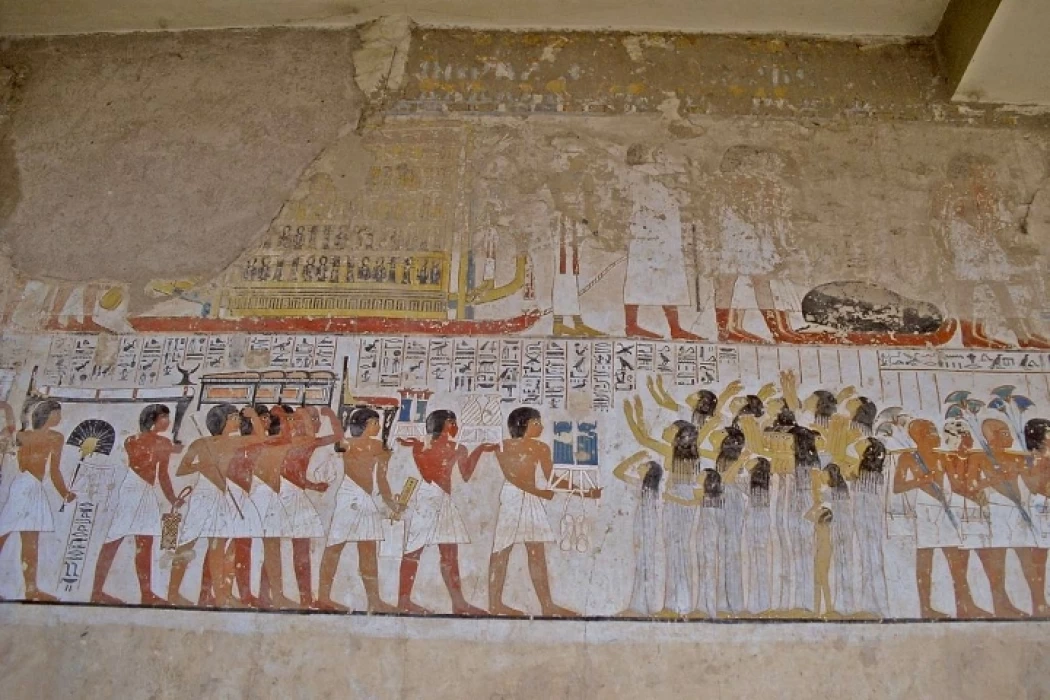
Tomb of Ramosa in Luxor | Tombs of The Nobles Luxor
Facts about Tomb of Ra Moza in Luxor
The tomb of Vizier Ra Moza is one of the largest tombs excavated in Mount Qurna. The tomb was not used or even buried in it, as it was not completed, due to the fact that the minister left the rule of the city of Thebes and went to rule in Tel el-Amarna with King Akhenaten during his religious revolution as in the religion of the ancient Egyptians and to show the development of sculpture in ancient Egypt.
The tomb was subjected to theft and vandalism, especially the wall inscriptions and excavations, by the thieves of Pharaonic tombs in the era of King Hor Mahab, due to King Hor Mahab's desire to take revenge on all those connected to King Akhenaten.
The graffiti combines the era of King Amenhotep III and the era of King Akhenaten, where the colours and general taste differ from the culture of worshiping the god Amun and the god Aton, the most famous ancient Egyptian gods, as was the ancient beliefs of the pharaohs and the texts in the ancient Egyptian language.
What was Ra Moza's job in Ancient Egypt?
Ra-Moza, also known as Ramsi or Ra-Moza, was a long-time governor of Thebes and a minister in the government of ancient Egypt during the reigns of King Amenhotep III and King Amenhotep IV (Akhenaten).
Ramsay's tomb inscription:
In the transverse hall of Ra Mouza's tomb, you will see a pharaonic inscription on the left wall of Minister Ra Mouza offering sacrifices and food to the ancient Egyptian gods and behind him is a group of people carrying papyrus flowers.
There is also an inscription of Minister Ra Mouza with relatives and family in a state of celebration and gatherings in the form of 4 groups.
There is an inscription of the stages of the burial of the deceased in the era of King Akhenaten on the south wall, where a group of men and women are drawn in great sorrow carrying papyrus flowers and funerary furniture as was the custom in the Pharaonic civilisation to show the development of architecture in Ancient Egypt.
At the top of the wall, you will see a Pharaonic inscription of how to place the Pharaonic coffin inside the cabin on a small sea boat, in addition to containing embalming tools for the mummy of the pharaohs, indicating the development of medicine in ancient Egypt and the science of embalming among the ancient Egyptians.
As you move forward, you will see an inscription of the minister Ra Moza with his wife in a state of worship to the god Osiris, then an inscription of the minister standing in front of King Akhenaten and behind him the god Maat, the symbol of law in ancient Egypt, and under the king's throne texts in ancient Egyptian for the so-called Nine Arches peoples.
On the right wall you will see an engraving of Minister Ra Moza with his wife and a group of people carrying offerings, then an engraving of three girls carrying chains, then an engraving of the process of purification of the deceased by the temple priests.
A group of temple priests bearing gifts in front of Vizier Ra Moza and his wife, King Amenhotep IV and his wife Queen Nefertiti, the most well-known queen of Pharaonic Egypt, is shown in an inscription as you go.
A unique pharaonic inscription of the minister welcoming a group of foreign delegations and statesmen may be found in the archeological tomb of Raamsi. Another inscription depicts King Akhenaten and his wife Queen Nefertiti in a state of adoration under the sun. There are incomplete carvings of a group of females congratulating the minister in red and black, reminiscent of Pharaonic festivities, near the end of the hall.
A group of temple priests bearing gifts in front of Vizier Ra Moza and his wife, King Amenhotep IV and his wife Queen Nefertiti, the most well-known queen of Pharaonic Egypt, is shown in an inscription as you go.
A unique pharaonic inscription of the minister welcoming a group of foreign delegations and statesmen may be found in the archeological tomb of Raamsi. Another inscription depicts King Akhenaten and his wife Queen Nefertiti in a state of adoration under the sun. There are incomplete carvings of a group of females congratulating the minister in red and black, reminiscent of Pharaonic festivities, near the end of the hall.
Address of the tomb of Ra Mouza:
West Bank of the Nile River in the tombs of Sheikh Abdul Qurna, Thebes Tomb, Luxor, Egypt.
Visiting hours:
Daily: 09:00 am to 05:00 pm.
Ticket prices:
- Foreign tourist ticket price = 60 EGP.
- Foreign student ticket price = 30 EGP.
- Egyptian tourist ticket price = 10 EGP.
- Egyptian student ticket price = 5 EGP
Latest Articles
Admin
Aswan Governerate in Egypt
One of Egypt's southern governorates is Aswan Governorate. The city of Aswan serves as its capital. At a latitude of 22 north of the equator (also known as the Tropic of Cancer), it is bounded to the north by the Qena Governorate, to the east by the Red Sea Governorate, to the west by the New Valley Governorate, and to the south by the Republic of Sudan.
Admin
Luxor Governorate Egypt
The capital of the Arab Republic of Egypt is Luxor City, which was once known as "Thebes City" because it served as Egypt's capital during the Pharaonic era. It is situated in the South Upper Egypt region, approximately 670 kilometers from the capital Cairo from the south. It is bordered on the north by Qena Governorate, on the south by Aswan Governorate, on the east by Red Sea Governorate, and on the west by New Valley Governorate.
Admin
History of kafr El Sheikh Governorate
Kafr El Sheikh Governorate is an Egyptian governorate, located in the northernmost part of Egypt in the Nile Delta, with Kafr El Sheikh as its capital. It had a population of 3,172,753 in 2015 and an area of 3,748 km². Its entire area is located north of the delta and overlooks the Mediterranean Sea. The main economic activity of the residents of the governorate is agriculture and fishing, especially the southern lands of the governorate and the lands overlooking the Nile River - Rosetta Branch.
Admin
Egypt's New Administrative Capital
The New Administrative Capital is located between the Cairo-Suez and Cairo-Ain Sokhna roads, 60 km from Cairo and the same distance from Ain Sokhna and Suez. The New Administrative Capital is located on the border of Badr City, in the area between the Cairo-Suez and Cairo-Ain Sokhna roads, just after New Cairo, Mostakbal City and Madinaty.
Admin
Al Gharbia Governorate
Gharbia Governorate is one of the governorates full of archaeological sites, whether they are places or facilities (mosques, churches), as the governorate is a destination for visitors to these places throughout the year, whether they are Egyptians from the different governorates.
Admin
Hamata Islands (Qulaan Archipelago) in Marsa Alam
The Hamata area, south of Marsa Alam in the Red Sea, is one of the most important parts of the Wadi El Gemal Reserve, whether in the desert or the sea. It was named after the sorrel plant, which was distorted to Hamata.






